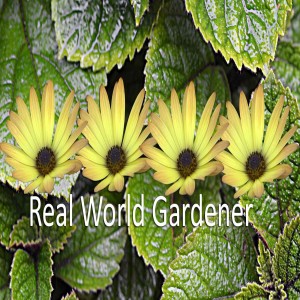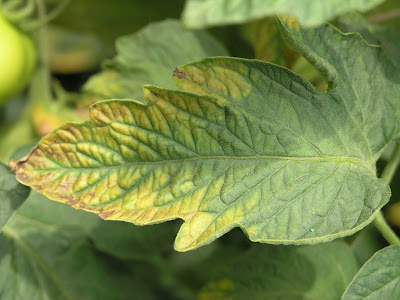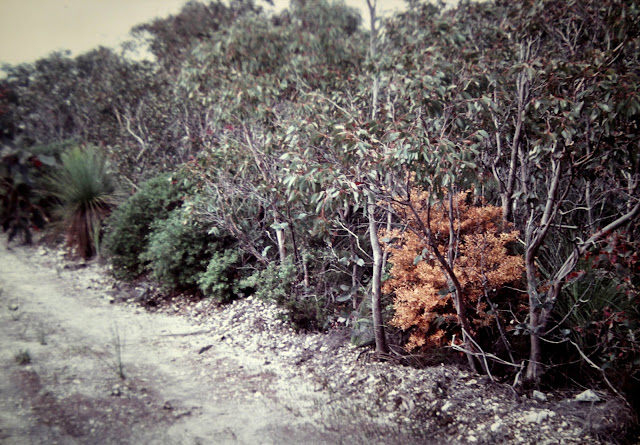
Episodes

Sunday Mar 20, 2022
Phosphorus and Potassium Deficiency in Plants Solved
Sunday Mar 20, 2022
Sunday Mar 20, 2022
Plant Nutrition Deficiencies:Phosporus and Potassium
- In fact there are three major nutrients which are classified as NPK ratio on the back of all fertilisers. So in this part of the blog, we carry on with the two other major or macro nutrients.
Let's look at phosphorus deficiency
- Phosporus is known as a mobile nutrient which can move around the plant to where it's needed.
- Phosphorus deficiency happens more often in cold weather or gardens receive high rainfall, or a combination of both.
- Often affects heavily fruiting plants such as citrus.
- N..B. native plants are highly sensitive to phosphorus, so avoid spreading phosphate fertilisers near these plants.
Let's look at potassium deficiency

I would recommend becoming familiar with the NPK ration on fertilisers, whether organic or not to see if you’re applying the right sort for your plants.
For example, fertilisers that promote flowering and fruiting have higher ratios of potassium than those that are just for general purpose fertilising.
If you have any questions you can email us Realworldgardener@gmail.com or write in to 2rrr, PO Box 644 Gladesville NSW 1675.

Saturday Mar 19, 2022
Nitrogen Deficiency in Plants
Saturday Mar 19, 2022
Saturday Mar 19, 2022
PLANT HEALTH
Plant Nutrition Deficiencies: Macro Nutrient Nitrogen
The 'Plant health' segment was created for my radio show "Real World Gardener,' as a division of the 'Plant doctor' segment, because I felt that it’s important to focus on what can go wrong with plants that isn’t a pest or a disease.
In the following audio podcasts, you will hear about what to look for in plants that have deficiencies of one of the macro nutrients: Nitrogen:Phosphorus:Potassium; in other words NPK or the macro nutrients.
Gardeners can often see problems appearing first in the colour of the leaves, but this can also be followed closely by lack of vigour, stunted growth and general unthriftiness of the plant.
Macro Nutrient Nitrogen

Listen to the podcast: I'm talking with Kylie Last horticulturist and tafe teacher.
If you have any questions you can email us Realworldgardener@gmail.com or write in to 2rrr, PO Box 644 Gladesville NSW 1675.

Saturday Dec 18, 2021
More Slime Moulds part 2 in Plant Doctor
Saturday Dec 18, 2021
Saturday Dec 18, 2021
Slime Moulds part 2
The podcast continues with the topic of slime mould but particularly, about the slime mould called phytophthora.
Did you prick up your ears?
Yep, that’s the root rot known as phytophthora which gardeners dread.
Gardeners are often told that phytophthera, in particular Phytophthera cinnamomi, is a fungi but it's actually a water mould. You may have even heard it called 'root rot.'
- Phytophora is a particular slime mould that belongs to a group or Phyllum called Oomycota
- This group are moulds that can only move in water columns.
Phytophthora cinnamomi lives in the soil and in plant tissues,
During drought or prolonged dry periods , the organisms become dormant chlamydospores which is just a resting spore of Ascomycota.
When environmental conditions are suitable, the chlamydospores germinate, producing mycelia (or hyphae) and sporangia.
The sporangia ripen and release zoospores, which infect plant roots by entering the root behind the root tip.
This organism is very resistant to most chemicals that gardeners can throw at it and doesn't die with soil disturbance..
 |
| Dieback of branches of whole shrubs or trees is often seen in the Australian bush. |
Should you ever see branch dieback in your trees or shrubs or stem dieback in your tomatoes, it just may be due to a problem called root rot that is actually a slime mould.
The best way Botanic gardens have dealt with it is by fencing off affected beds within the gardens so horticulturists and the public don't transfer the spores around the the gardens or indeed, back home to their own gardens.
Drainage was also improved in garden beds so that the organism wasn't able to stay 'live' or active.
Compost is also added to soil to improve the soil so the microorganisms can combat this slime mould.
Let’s find out more by listening to the podcast.
I'm talking with Steve McGrane, horticulturist and agriculturist.
So know you know the facts and myths about Phytophthera and how to deal with it in your garden.
If you have any questions about slime mould or some feedback why not email us realworldgardener@gmail.com or write in to 2RRR PO Box 644

